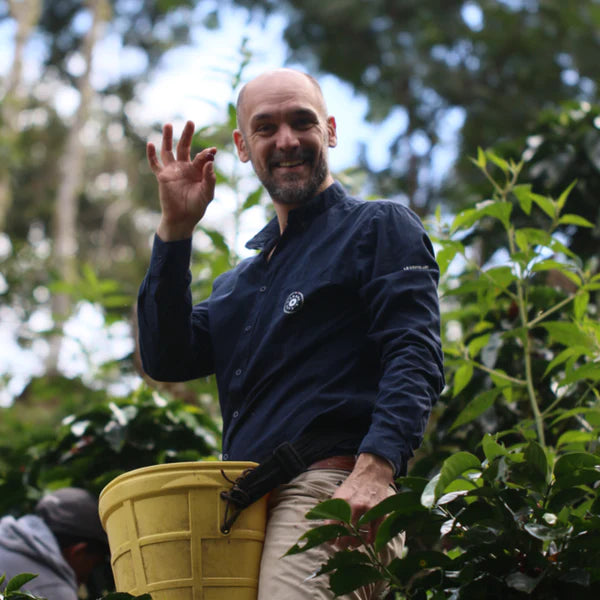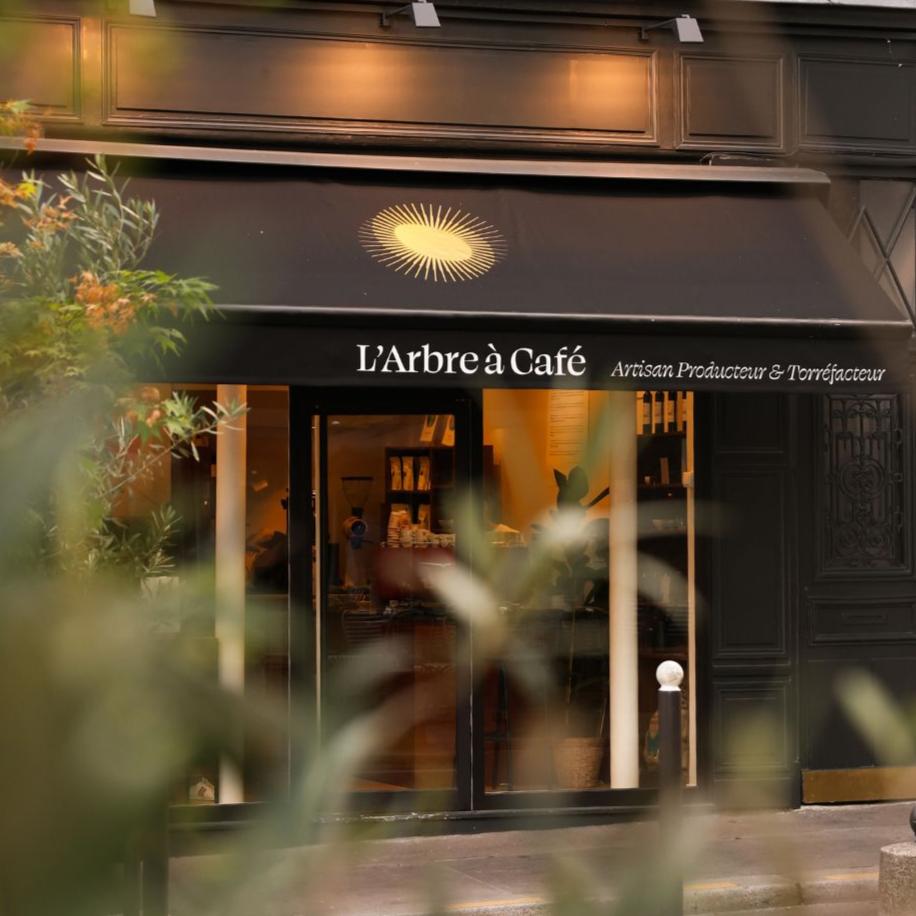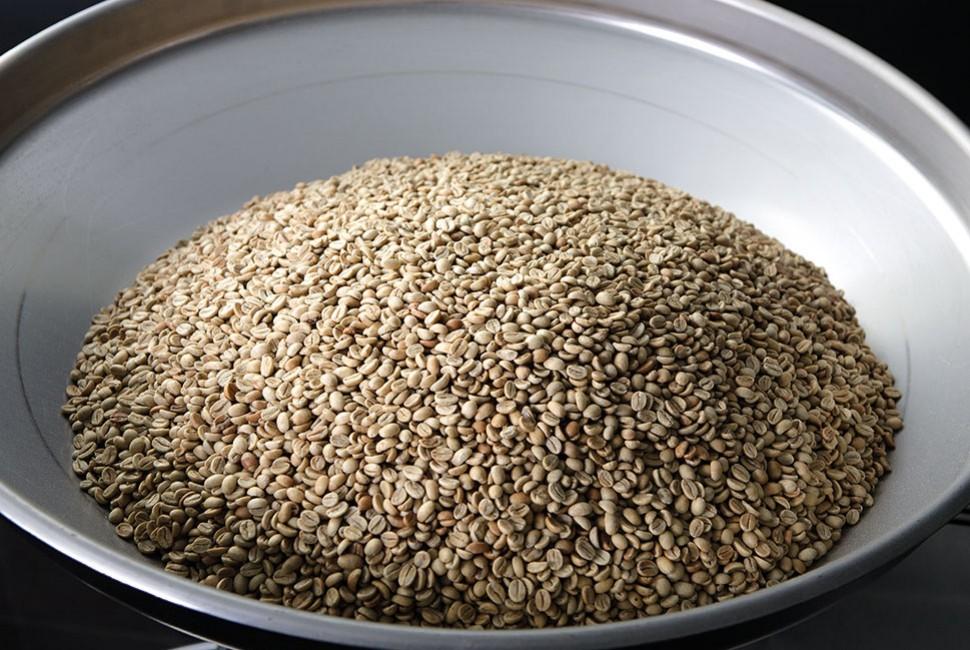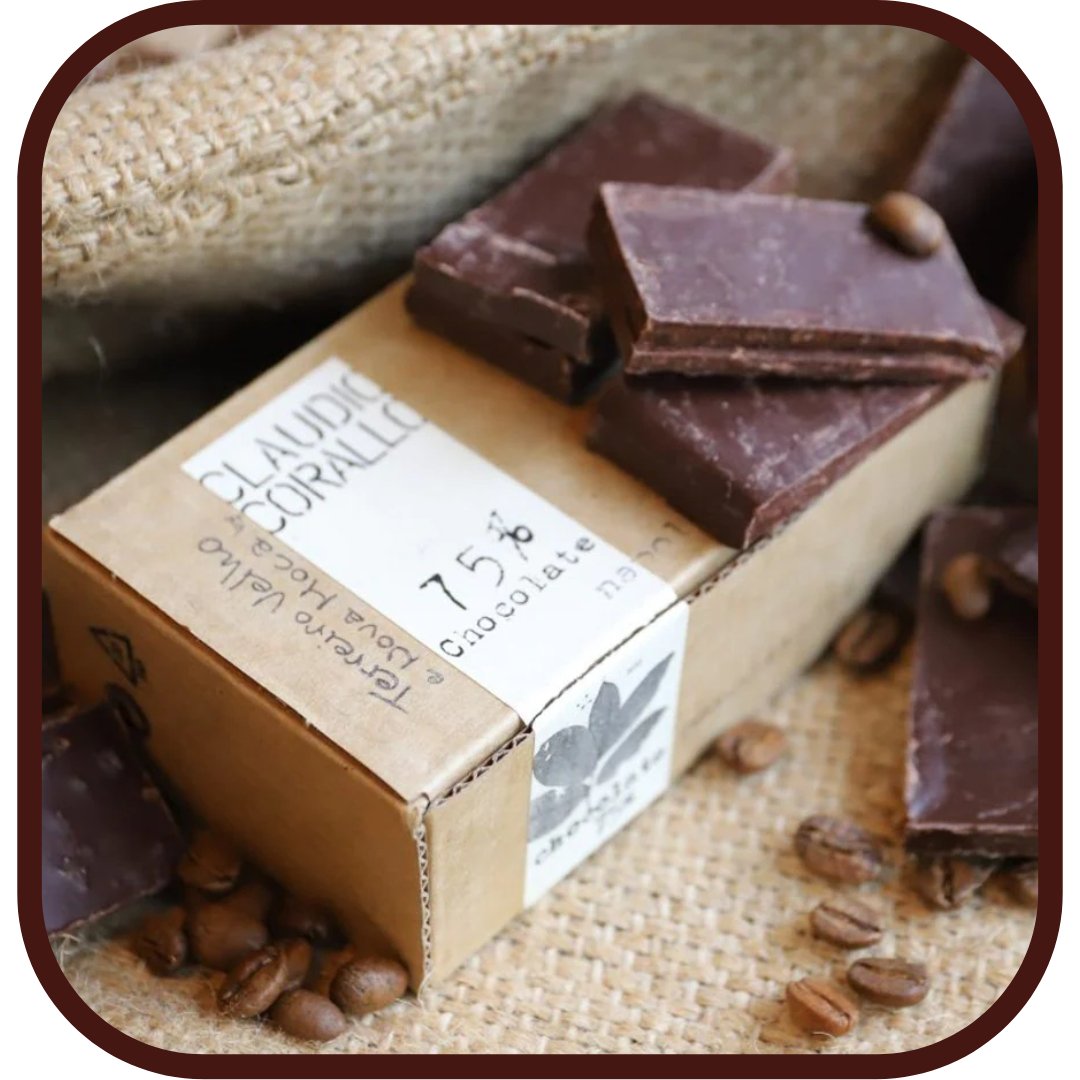Just like wines, coffees can be tasted and told, each creating its own story.
But how to talk about it when you are not an expert? How to choose when you are a layman?

From left to right: Jonathan Bauer (Best Sommelier of France 2014, Spring), Anne-Sophie Pic (Chef, three stars in the Michelin guide), the author, Cédric Casanova (olive oil expert, La tête Dans Les Olives), Jean-Michel Duriez (Perfume nose: Jean Patou, Rochas), Barbara Dufrêne (Journalist specializing in tea) and José Da Rosa (Epicerie Da Rosa, spice specialist).
Rest assured, here are a few things that will help you select the right coffee for you.
Coffee is a matter of taste
Like every food, coffee has its own characteristics that justify its own tasting techniques. In our store, we regularly organize cross-tasting sessions between different taste specialists: a perfume nose, a grocer, a sommelier, oil, tea or cocoa tasters.
The vocabulary and priorities differ from one specialist to another. The perfume nose will talk about molecules and place them in their respective families (oriental, chypre, leather, citrus, fern, woody or floral) and in their most frequent functions or associations - or on the contrary, the most original. The olive oil taster will recognize the lipids (especially lineolics in coffee) and will pay particular attention to the effects of extraction. He will use a small blue container whose shape is identical to that of a wine chalice. The sommelier will talk about the vintage and will be very sensitive to the balance and aromatic complexity.
Where does the taste of coffee come from?
The taste of coffee comes from a complex of which we do not know all the springs. Let's try to understand it, even if the caffeology in this field also, still has a lot to discover.
The variety of coffee
The coffee's DNA contains its organoleptic potential, which will be revealed in part, or not, by the natural conditions, its terroir, the vintage, the fermentations, the roasting and the service. It is often the vegetal aromas that remain or not depending on the type of fermentation, the Semi-Washed being the one that preserves the most but develops the least aromas. Typica is floral, Gesha contains flower and peach aromas, Iapar chocolate and artichoke, H3 lemon and SL 28 black currant.
Some varieties naturally contain more caffeine like Iapar 59, others less like Laurina, some contain more chlorogenic acids (responsible for part of the bitterness), like Catimor, others less like Bourbon.
The terroir of coffee
It is the support for the aromatic development of the variety, the one that will allow the genetic potential to reveal itself or not: acidity content, sweetness, etc. Taste the difference between the Gesha of Costa Rica and Panama - it is usually abysmal in terms of complexity and acidity -, between the low altitude Typica, rather flat, and the high altitude, exuberant.
Coffee vintages
The climatic conditions of the harvest year, the "vintage effect", have a direct impact on the quality of the coffee. We have seen above that several defects such as wrinkled beans are linked to excessive rainfall. On the other hand, a year that is too hot and too sunny will hasten the ripening of the coffee, reducing its complexity and acidity, and may even cause a number of fertilizations to abort and thus drastically reduce the harvest.
Coffee collection and processing
Harvesting creates many defects! As for the post-harvest treatment, its choice and its profile bring or reveal certain tastes (acidities, flavors, body, etc.). The chocolate flavors correspond to an intense bacterial activity that can be reinforced. Some acid or yeast additions during fermentations develop particular balances and textures.
Nature of the treatment |
Description |
Impact on the aromatic profile of the coffee |
Typical characteristics |
Frequent defects |
Frequent use |
Dry process (Natural coffee) |
Fermentation in whole cherry during drying |
Strong | Fruity, sweet coffees, generous body | Fermentation notes, and often high acetic acidity | Creamy and smooth in espresso |
Wet track |
Fermentation of pulped coffee in vats, with water or dry | Strong | Clean, complex and aromatic coffees, good acidity | Depending on the range, they can be highly defective | Especially in soft extractions |
Double wet track |
As above but 2 times | Strong | High aromatic complexity, good acidity | Increased fermentative risk, flat | Especially in soft extractions |
Pulped, Natural,
|
Limited fermentation of pulped coffee during drying | Medium, important varietal aromas | Round, simple, easy | Depends on the quality of the raw material, few fermentative problems | Optimal in espresso |
Honey,
|
Profiled fermentation of pulped coffee during drying | Strong | Floral, acid, sweet | Real fermentative risks | Soft extraction but also espresso |
Semi-Washed |
Rapid coffee fermentation | Low | Single coffee, varietal dominant | Depends on the quality of the sorting | All types for mixtures |
Giling Basah |
Interrupted fermentation and drying | Strong | Earthy, musty, fermentative | Has the qualities of its defects | Espresso, for blends |
Overripe Cherries |
Fermentation on the tree | Strong | Viney, even fermentative | Vinegar | Soft extractions |
Drying
This is one of the key stages, even when fermentation is limited to the maximum as in the wet process. During the drying process, moulds and fungi, condensation, etc. can develop. Drying has therefore impacts that can be very negative and strongly alter the quality and identity of the coffee.

Final sorting and storage
These two steps, as well as the previous one, are designed to guarantee the quality of the coffee, but do not improve it.
To choose your coffee,you must learn to taste it.
Feeling and self-confidence are undoubtedly the crucial points of tasting. Don't be afraid to say nonsense, whatever comes to mind, to keep in mind your first impression which is often the best one, to associate your sensations with landmarks in areas you know well.
Thus, one of the best ways to taste is to take as an example music, sports, cars, clothing, cooking, watches or anything else. This coffee reminds you of Wagner, the other of Handel and the third of Satie. From there, you will refer to the specific work, build bridges between these two worlds, work and coffee, and thus succeed in "listening" to your coffee with as much clarity and precision as the musical work.
This method is also used to buy coffee when you are unfamiliar with the names and vocabulary. "I like this music, this sport, this watch, etc., do you have a coffee that might suit me?" This way you will start with a tone, a color, a wavelength that is familiar to you.

You can learn how to taste coffee.
A few years ago, it was impossible to learn how to taste coffee. With the multiplication of Coffee Shops, Micro Roasteries, training institutes and coffee associations, all eager to convert the population to "good" coffee, the offer has expanded considerably.
Already, in some Asian countries, training in caffeology has become as natural as training in oenology in Europe. In order to choose the right training, it is important not to confuse cupping sessions, like the pros, with tasting. Cupping is a daily practice for all professionals, very much in vogue today, but it is too far removed from the daily practices of even the most amateur of individuals. Who drinks coffee with a spoon?
Let's remember that tasting is hedonic, that the amateur wants a sensory experience accessible in his daily life. This is why we have created a Coffee School for everyone, based on the most advanced knowledge and techniques, but adapted to everyday life.
As you can see, there are a thousand ways to enjoy coffee, as each person's taste differs. The best coffee exists. It's the one you'll enjoy the most. Don't hesitate to follow us on our Facebook page and to participate in our tastings to get an idea.


















